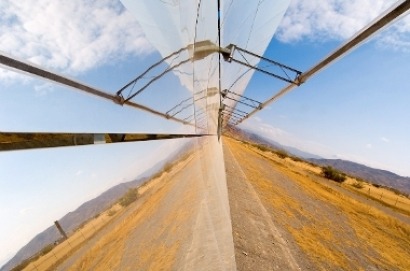
Independent Power Producers (IPPs), both in Europe and on the greater African continent, are clamouring to enter the next big concentrating solar power (CSP) market. For its part, South Africa’s government is energetically encouraging external investment into its local renewable energy industry.
The South African Government’s commitment to the liberalisation of the electricity supply industry is reflected in the Department of Energy’s (DoE) mandate that IPPs contribute 30% of new generation capacity by 2030. The first bid window has taken place and culminated with the announcement of the names of the country’s first 28 renewable energy IPPs. There is a great deal of interest in the second window, which will close in March this year.
Favourable tariff
Gareth Blanckenberg, Energy & Power Systems Research Analyst for Frost & Sullivan, business research and consulting firm, says: “A rapidly increasing electricity tariff has created an attractive and profitable market for IPPs.” South Africa’s electricity tariff is increasing by approximately 25% a year. “Even in the absence of incentivised procurement programmes, this tariff alone should entice IPPs to enter into the market as they should be able to earn attractive rates of return on their investments,” Blanckenberg explains.
Blanckenberg points out that, moreover, South Africa now has greater policy and regulatory certainty with a strong developmental focus for renewable energy projects. IPPs look for this in order to commit to the market.
Local content mandates
It has been reported that South Africa’s renewables programmes could potentially generate 22,566 jobs. This, however, will only flow from policies that insist on local content. As such, there are targets for local content, job creation, ownership, indigenous people in top management, preferential procurement and enterprise development.
“Under the Department of Energy's Renewable Energy Independent Power Producer Procurement Programme, project developers need to meet certain thresholds,” stresses Blanckenberg.
“Local content is based on the value of local content spend and must be 25 to 35% of the project value, depending on the type of generation technology employed,” he adds.
“Because the local content rules are based on project spend, there is currently plenty of scope to attain the 25 to 35% without having to manufacture locally. However, these thresholds might rise in the future, in which case there will need to be some sort of manufacturing base within South Africa.”
South Africa’s government is striving to create what it terms an ‘enabling environment’. The Eskom Guide to Independent Power Producer (IPP) Processes states: “A key precondition to attracting private sector participation in the electricity supply industry is the creation of a supportive ‘enabling environment’. The enabling environment requires coordination and alignment between Government departments, state-owned enterprises, businesses and development institutions.“
Blanckenberg explains that this ‘enabling environment’ would be attractive to IPPs and supportive of their participation in the electricity supply industry. It would be accomplished through measures such as clear and consistent policy, robust legislation, and clearly defined guidelines to achieve project implementation. This is being achieved through co-ordination between all the relevant role players and streamlining of processes by the Department of Energy (DoE), the National Energy Regulator of South Africa (Nersa), the National Treasury and Eskom.
The government is also targeting a ‘green economy’ by means of both the New Growth Path and the Industrial Policy and Action Plan. Specific measures have already been implemented; the Industrial Development Corporation (IDC) has made available R22.4 billion of funding over the next five years to develop ‘green industries’, which includes renewable energy.
In addition, an initiative called the South African Renewables Initiative (SARi), has been undertaken by local Government, global donors and foreign governments to implement funding solutions and to reduce renewables deployment costs. The initial partners are the United Kingdom, Germany, Denmark, Switzerland, Norway and the European Investment Bank.
IRP 2010 supports framework
The more stable policy and regulatory framework is supported by the Integrated Resource Plan (IRP) 2010, promulgated by Dipuo Peters, Minister of Energy, which contends that the IRP “continues to indicate a balance between different Government objectives, specifically economic growth, job creation, security of supply and sustainable development.”
Peters sums it up concisely: “We have put in place a clear programme of incentives for investment, as well as the development of the requisite human resource capacity to take full advantage of the opportunities presented due to the growth in the renewable energy sector.”
The results already appear promising. South Africa’s renewable energy sector has elicited significant interest from international market players, with many European OEMs already having established a local presence to take advantage of the numerous market opportunities going forward.
CSP Today South Africa 2012 kicks off tomorrow with Alan Brent, Professor in the Sustainable Development Programme, Centre for Renewable and Sustainable Energy Studies, Paul Gauche, Sr. Researcher & Coordinator, Solar Thermal Energy Research Group Stellenbosch University, John Huffaker, Vice President - Commercial Development, AREVA, Ken Duncan, CEO, Swiss South African Co-operation Initiative (SSACI) and Nico Kelder, Senior Economist, Industrial Development Corporation (IDC) speaking in depth about the local supply chain challenges in South Africa.
For additional information:

